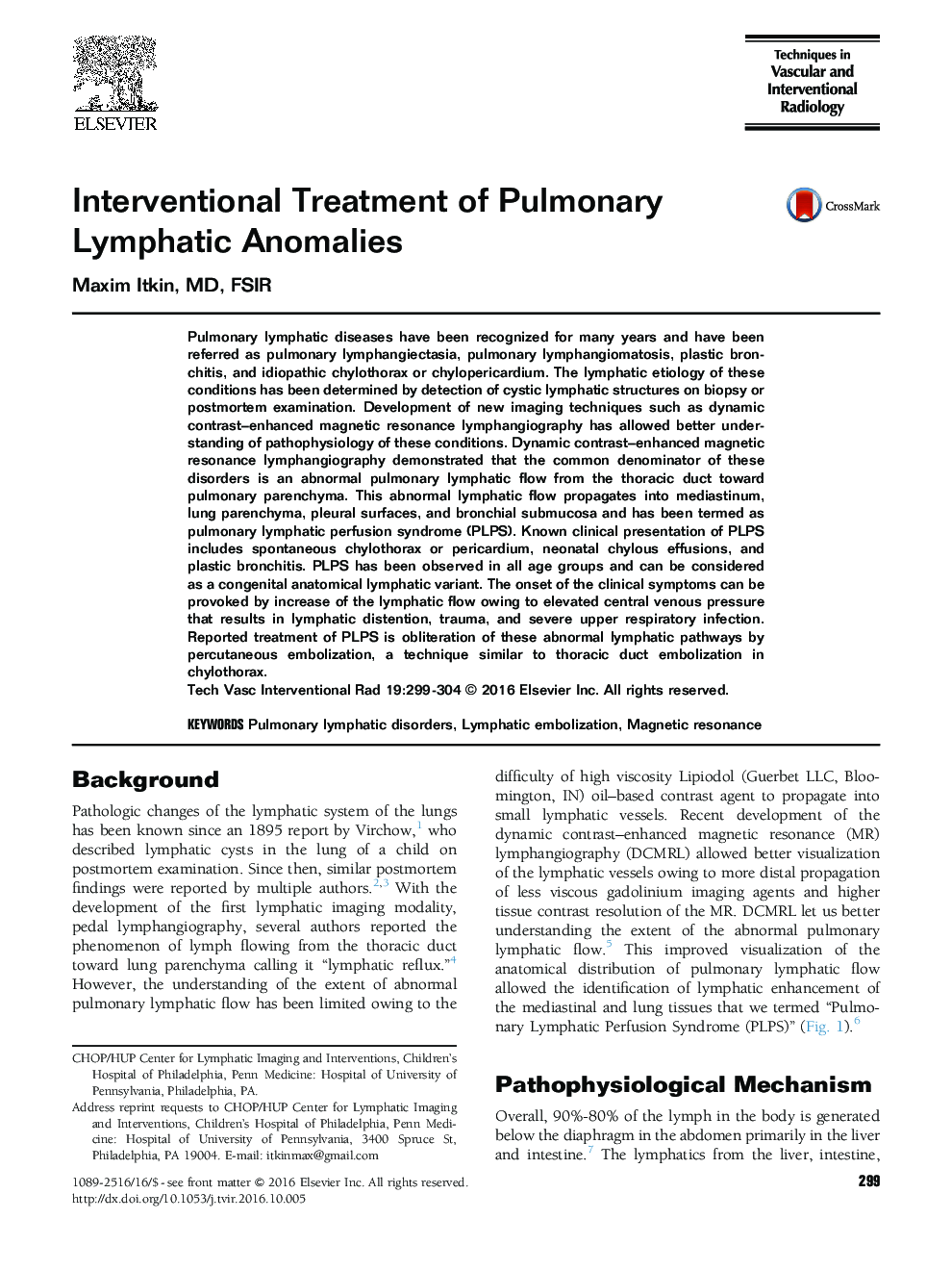| Article ID | Journal | Published Year | Pages | File Type |
|---|---|---|---|---|
| 5728401 | Techniques in Vascular and Interventional Radiology | 2016 | 6 Pages |
Pulmonary lymphatic diseases have been recognized for many years and have been referred as pulmonary lymphangiectasia, pulmonary lymphangiomatosis, plastic bronchitis, and idiopathic chylothorax or chylopericardium. The lymphatic etiology of these conditions has been determined by detection of cystic lymphatic structures on biopsy or postmortem examination. Development of new imaging techniques such as dynamic contrast-enhanced magnetic resonance lymphangiography has allowed better understanding of pathophysiology of these conditions. Dynamic contrast-enhanced magnetic resonance lymphangiography demonstrated that the common denominator of these disorders is an abnormal pulmonary lymphatic flow from the thoracic duct toward pulmonary parenchyma. This abnormal lymphatic flow propagates into mediastinum, lung parenchyma, pleural surfaces, and bronchial submucosa and has been termed as pulmonary lymphatic perfusion syndrome (PLPS). Known clinical presentation of PLPS includes spontaneous chylothorax or pericardium, neonatal chylous effusions, and plastic bronchitis. PLPS has been observed in all age groups and can be considered as a congenital anatomical lymphatic variant. The onset of the clinical symptoms can be provoked by increase of the lymphatic flow owing to elevated central venous pressure that results in lymphatic distention, trauma, and severe upper respiratory infection. Reported treatment of PLPS is obliteration of these abnormal lymphatic pathways by percutaneous embolization, a technique similar to thoracic duct embolization in chylothorax.
